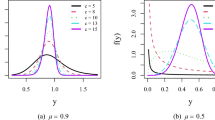Abstract.
We advance the theory that the distribution of beliefs in the market is the most important propagation mechanism of economic volatility. Our model is based on the theory of Rational Beliefs (RB) and Rational Belief Equilibrium (RBE) developed by Kurz (1994, 1997). We argue that the diverse market puzzles which are examined, such as the equity premium puzzle, are all driven by the structure of market expectations. In support of our view, we present an RBE model with which we study financial markets. The model is able to simulate the correct order of magnitude of: (i) the long term mean and standard deviation of the price\dividend ratio; (ii) the long term mean and standard deviation of the risky rate of return on equities; (iii) the long term mean and standard deviation of the riskless rate; (iv) the long term mean equity premium. In addition, the model predicts (v) the GARCH property of risky asset returns; (vi) the observed pattern of the predictability of long returns on assets, and (vii) the Forward Discount Bias in foreign exchange markets. The common economic explanation for these phenomena is the existence of heterogenous agents with diverse but correlated beliefs such that some agents are optimistic and some pessimistic about future capital gains. The model has a unique parameterization under which the model makes all the above predictions simultaneously. The parameterization requires the optimists to be in the majority but the rationality of belief conditions of the RBE require the pessimists to have a higher intensity level. In simple terms, the large equity premium and the low equilibrium riskless rate are the result of the fact that at any moment of time there are agents who hold extreme pessimistic beliefs and they have a relatively stronger impact on the market. The paper also studies the effect of correlation of beliefs among investors. It shows that the main effect of such correlation is on the dynamic patterns of asset prices and returns and is hence important for studying such phenomena as stochastic volatility.
Similar content being viewed by others
Author information
Authors and Affiliations
Additional information
Received: May 16, 2000; revised version: November 15, 2000
Rights and permissions
About this article
Cite this article
Kurz, M., Motolese, M. Endogenous uncertainty and market volatility. Econ Theory 17, 497–544 (2001). https://doi.org/10.1017/S0266466601173019
Issue Date:
DOI: https://doi.org/10.1017/S0266466601173019



